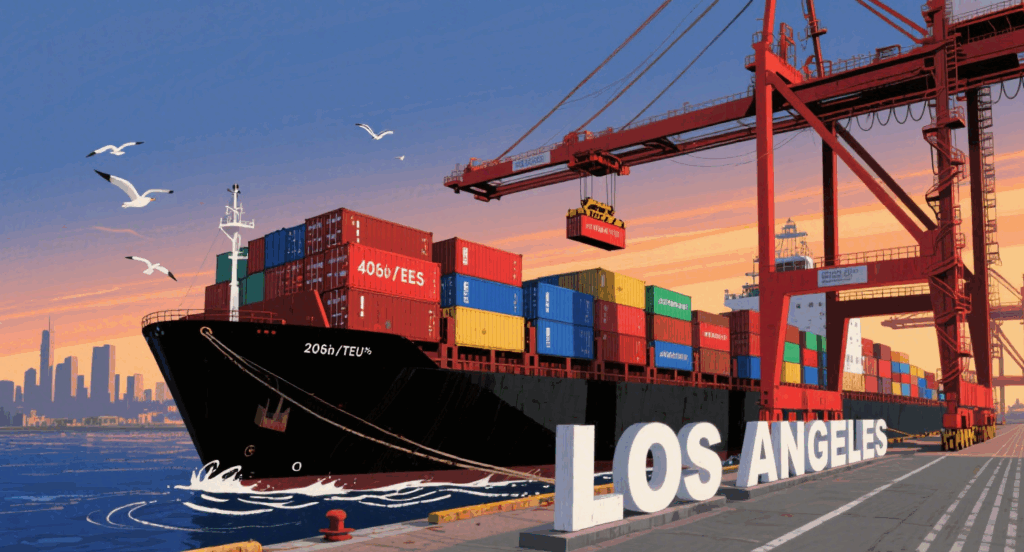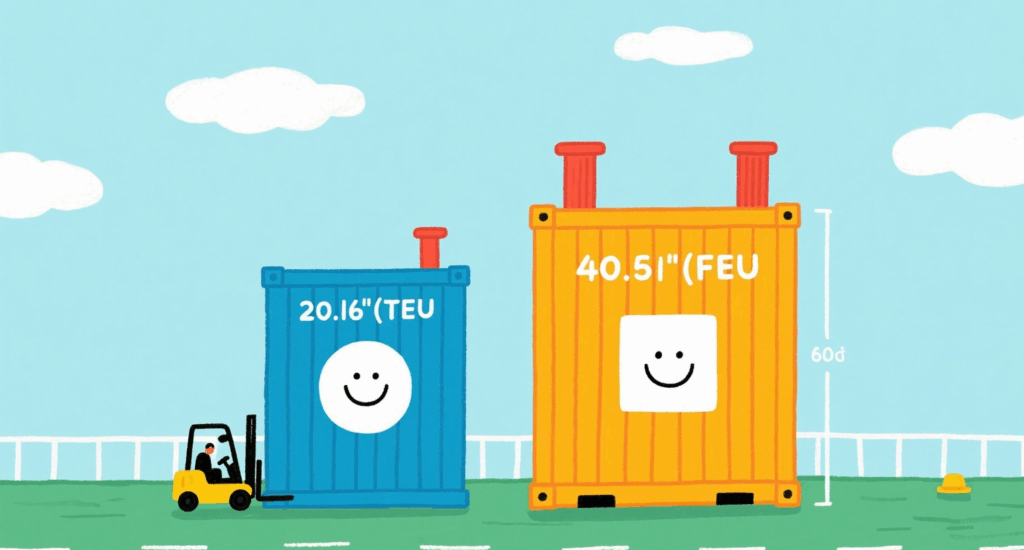1. What Is the Pier Pass Fee?
The Pier Pass fee, officially the Traffic Mitigation Fee (TMF), is a charge applied to most containerized cargo moving through the Ports of Los Angeles and Long Beach, the two largest U.S. gateways for international trade.
This fee was introduced to improve port efficiency and minimize congestion by encouraging the use of off-peak terminal hours. It applies to both imports and exports and is a non-negotiable part of doing business through these West Coast ports.
📌 Latest status: As of August 2025, the TMF continues to be enforced under the flat-fee model known as OffPeak 2.0, which applies charges regardless of time of day.

2. Why Was It Created?
PierPASS Inc. launched the program in 2005 as a collaborative effort by marine terminal operators. The original goal was to reduce daytime truck congestion and harmful emissions in the densely populated communities surrounding the ports.
Key objectives of the program include:
- Spreading truck traffic across more hours of the day
- Reducing gate delays during traditional working hours
- Meeting clean air goals outlined in California’s environmental plans
- Improving operational consistency across all terminals
Without the Pier Pass system, traffic volumes during standard business hours would be significantly higher, creating delays for shippers and additional costs for carriers.
3. 2025 Pier Pass Fee Rates
As of August 1, 2025, the TMF rates remain:
| Container Size | Fee Amount |
|---|---|
| 20-foot container | $35.57 |
| 40-foot container | $71.14 |
These rates were last adjusted in November 2023 and are still valid in August 2025. No increases have been announced for the remainder of the year.

4. When and How the Fee Applies
The TMF is applied to all loaded containers entering or leaving a terminal, regardless of time. This is part of the flat-fee structure adopted in the OffPeak 2.0 system, which replaced the original peak-time-only model in 2018.
Terminals operate extended hours under this model, and the TMF helps fund that availability. Whether your container is picked up at noon or midnight, the fee is the same.
5. Who Pays the Fee?
The Pier Pass fee is usually paid by:
- Freight forwarders
- Importers or BCOs (Beneficial Cargo Owners)
- Drayage/trucking companies, who may pass the charge to clients
Most logistics providers include it in their quotes or invoices. It is a non-optional fee for containerized cargo and is managed digitally via terminal gate systems.
6. What Cargo Is Exempt?
The TMF does not apply to:
- Empty containers
- Transshipped cargo
- Alameda Corridor cargo (which has a separate fee)
- Chassis-only and bobtail trucks
- Domestic rail transfers in some cases
These exemptions help avoid unnecessary charges on container movements that don’t contribute to local road congestion.
7. The OffPeak Program in 2025
OffPeak is the operational core of the Pier Pass system. All 12 international terminals at the twin ports participate in extended shifts:
- Evening gate hours
- Saturday operations
- Appointment-based scheduling systems
This program ensures that truckers and cargo owners have more flexibility to avoid peak hour delays. According to port authority data from Q2 2025, more than 52% of truck moves now occur outside traditional business hours.

8. Supply Chain Benefits
Pier Pass provides multiple benefits across the logistics chain:
- Faster terminal turn times
- Lower emissions from reduced idling
- Improved planning through consistent fee structures
- Support for California’s Clean Air Action Plan (CAAP)
As container volumes continue to grow in 2025, using OffPeak hours helps prevent costly delays during daytime operations.
9. How to Pay the Fee
Payments are processed via:
- The PierPASS web portal
- Integrated logistics software (used by most freight forwarders and 3PLs)
- EDI/API connections to marine terminal systems
Truckers must verify TMF payment before arriving at a terminal gate. Failure to do so may result in rejected entry or appointment delays.
10. What to Expect in Late 2025
While no TMF rate changes have been confirmed for Q4 2025, port authorities have hinted at potential modifications in early 2026, including:
- A possible index-based fee increase
- Incentives for zero-emission truck usage
- Streamlined digital payment integrations
Stakeholders should monitor updates from PierPASS.org or their logistics providers for future developments.
11.Final Thoughts
The Pier Pass fee remains a critical tool for keeping Southern California’s port complex efficient, sustainable, and responsive to growing trade demands. With consistent rates, predictable enforcement, and evolving environmental incentives, understanding and planning for this charge is essential for shippers and truckers alike.
Request a Quote
Need a tailored solution for your shipping from China?
Let TJ China Freight Forwarder assist you with reliable, cost-effective service.
FAQ:
Q1.Do I still pay the fee if my container moves at night?
Yes. Since 2018, the TMF is a flat rate and applies to all times of day, not just daytime moves.
Q2.Can I get a discount if I use zero-emission trucks?
Not yet. However, the Port of LA and Long Beach are considering future discounts for green drayage operators as part of their Clean Air Action Plan.
Q3. Is the fee per container or per truck?
The TMF is per container, not per truck. If a truck hauls two containers, the fee is applied to each one individually.
Q4.Is the TMF included in my freight quote?
Usually yes, but always confirm with your freight forwarder. Some providers break it out as a separate charge.
Q5.Do rail shipments pay the Pier Pass fee?
Rail shipments that go directly to or from on-dock rail or the Alameda Corridor are often exempt, but confirm with your logistics provider.
